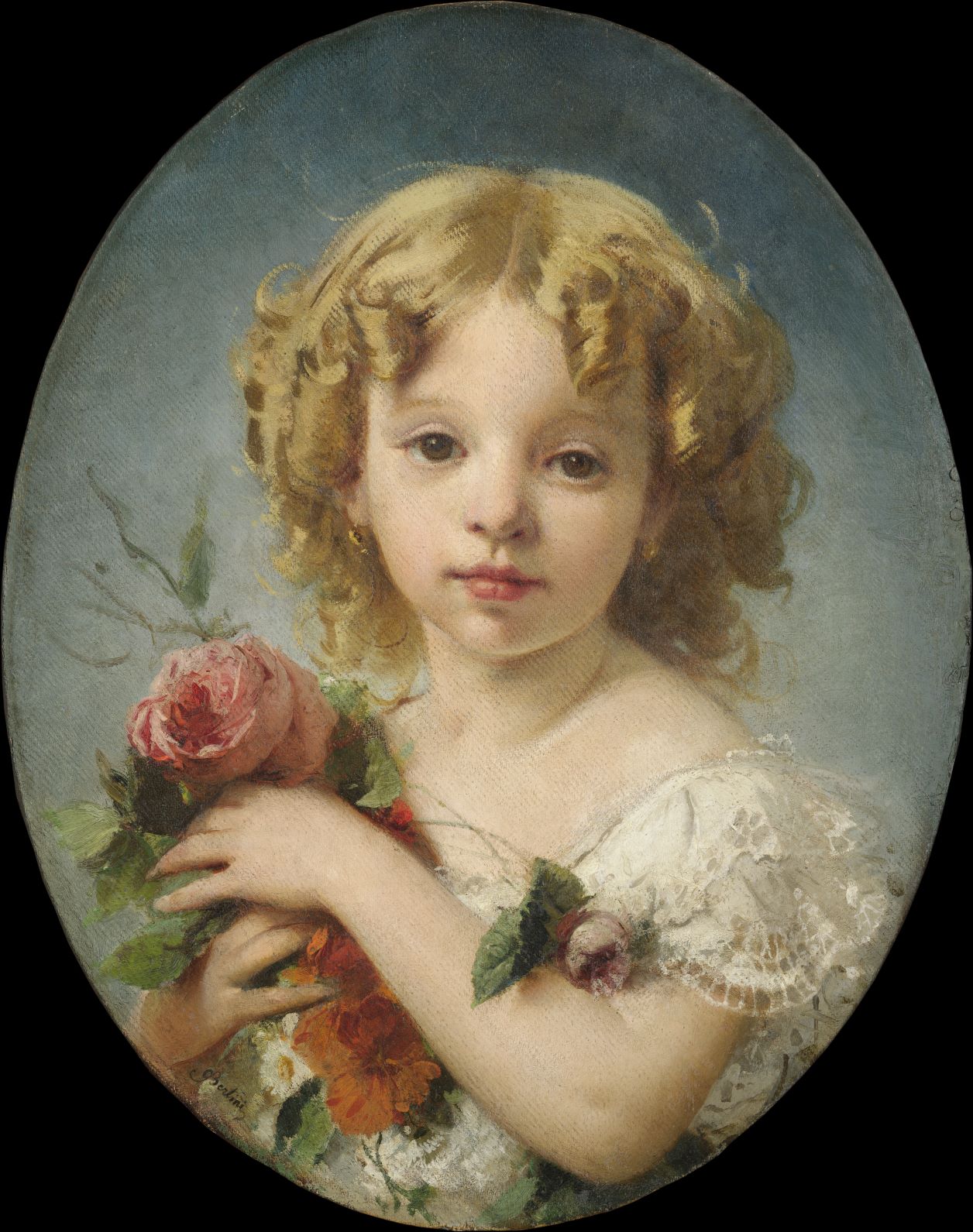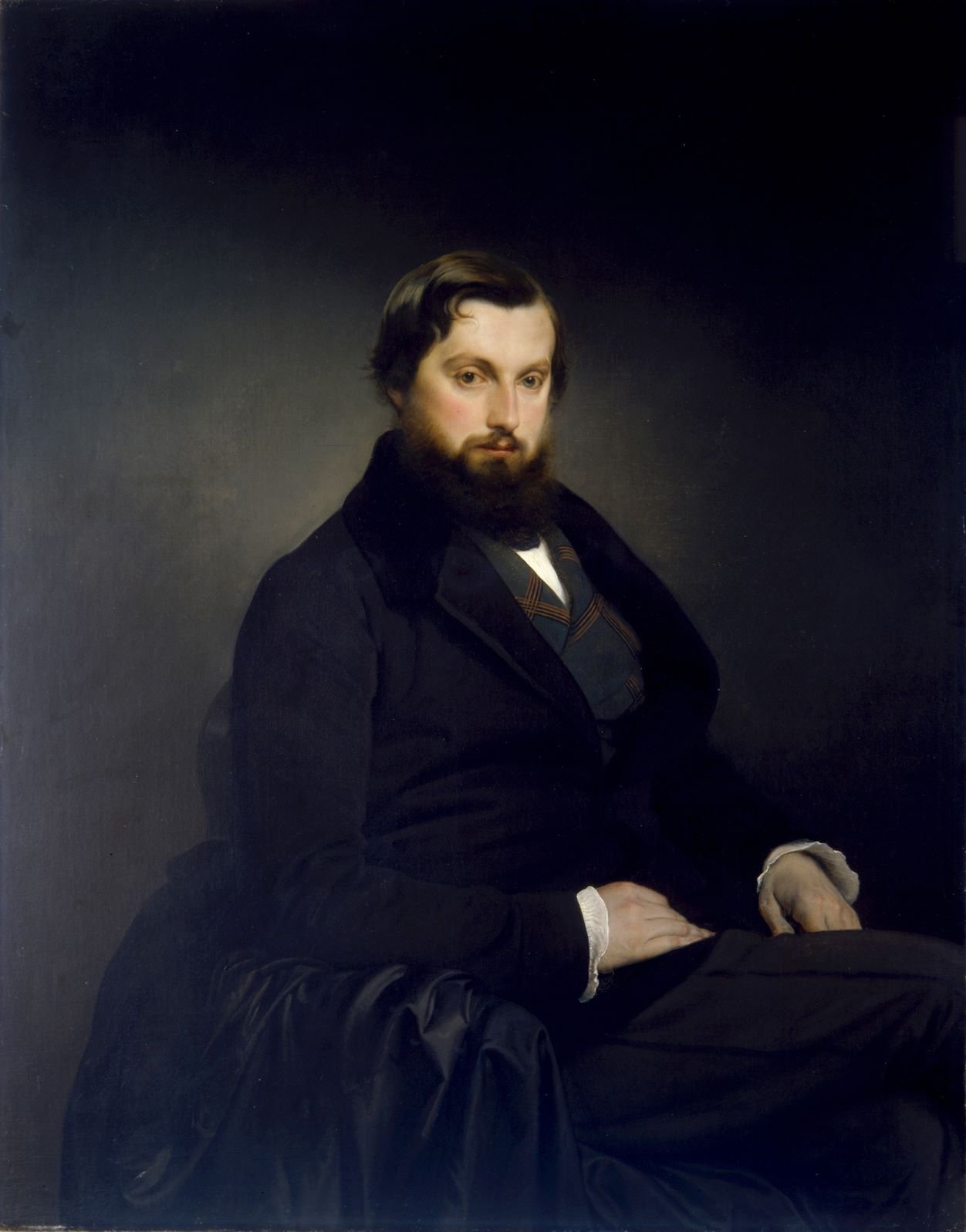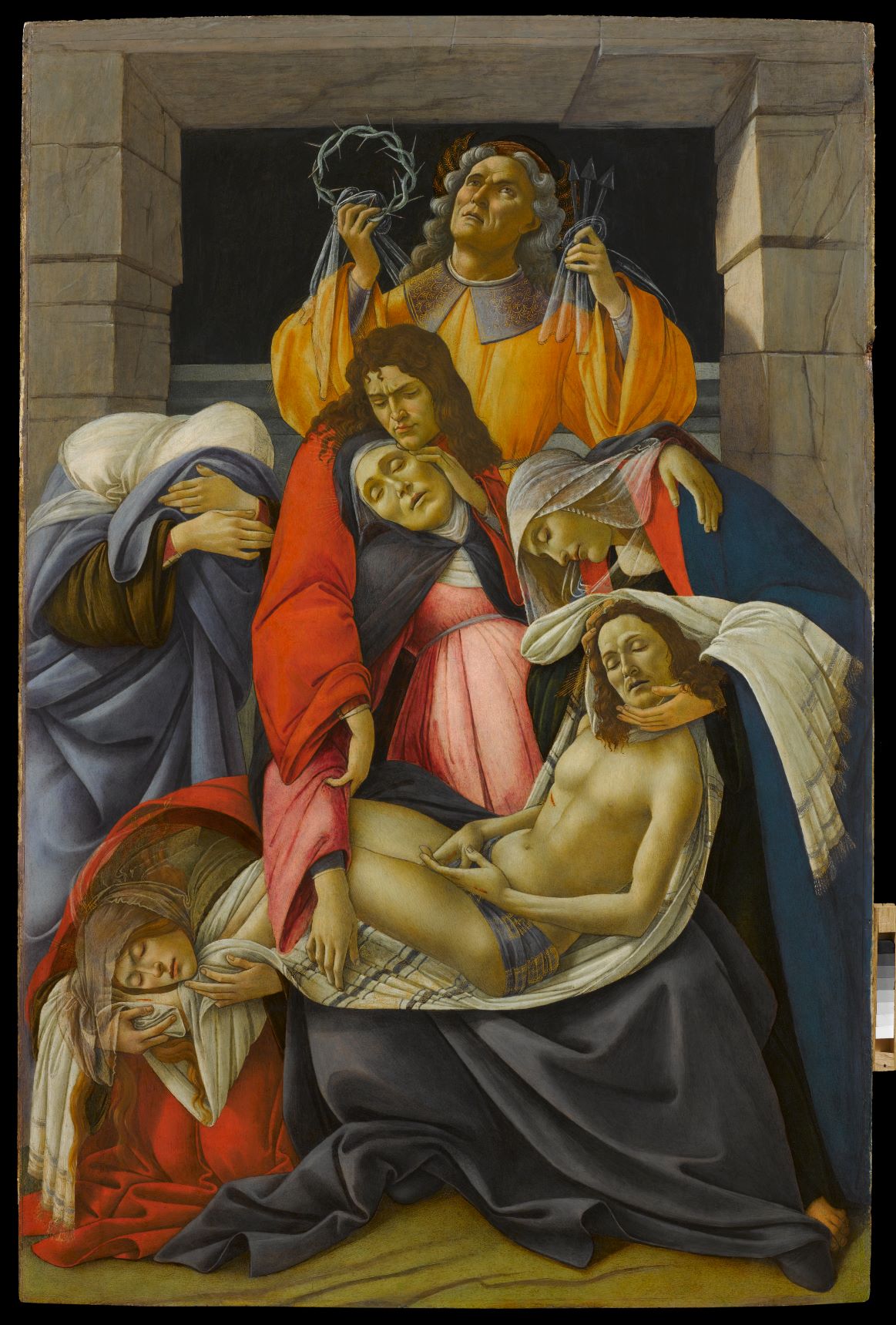Gian Giacomo Poldi Pezzoli: a call from the past
Gian Giacomo Poldi Pezzoli collected antiques, and kept them connected with his own time. That is why the museum he founded is still a milestone.
Gian Giacomo Poldi Pezzoli, father of the Milanese museum which still bears his name, starts collecting at a very young age. He is initially interested in the artists of his time. His mother Rosina Trivulzio, daughter of Gian Giacomo Trivulzio, Marquis of Vigevano, after whom Poldi Pezzoli was named, is a renowned patron in Milan, close to the Accademia di Brera. The Trivulzio family already had a private museum, the Museum Trivulzio, and a large collection of books (as described by abbot Pietro Mazzucchelli in a document from 1817).
Rosina likes art from her own time and is very close to contemporary artists like Giuseppe Molteni, or Lorenzo Bartolini who, in 1828, carves a beautiful marble bust of her which is still in the collection of the Milanese Museum. Giacomo’s father, Giuseppe Pezzoli d’Albertone, who beside inheriting his uncle’s wealth (Giuseppe Pezzoli senior) also inherited the collection of books of abbot Giovanni Maria Pezzoli, brother of Giuseppe senior and his mother Margherita. He passes away when Gian Giacomo is only ten years old.

Gian Giacomo Poldi Pezzoli, a gentleman of his own time.
It is thus on the path marked by Rosina Trivulzio and by the tutors the mother selects for him that Gian Giacomo moves his first steps. Mother and child often travel together. To Parma, Florence, Bologna, Naples, Venice and obviously Paris, where they spend a rather long time in 1840. Giacomo Poldi, so the gentleman signs off, is 18 years old. He likes hunting, arms and horses, but he is also passionate about theater, and about actresses and dancers. Among whom there is Cora, Eleuteria, his lovers, and Laura Giordana. With this latter he has a brief affair in 1835, not really approved by the family. Rumours say he has a daughter from Giuseppina Parravicini, the second wife of chemist Francesco Cavezzali, also a well-known patron of the arts. In winter 1859 Rosina passes away, but Giuseppina Parravicini meanwhile gives birth to Camilla Cavezzali, who will become Poldi Pezzoli’s protege. When he dies, Gian Giacomo leaves her a four million liras inheritance, a true fortune back at that time, and a strongbox to use as her own dowry. Camilla, on her side, will leave a bequest to the Artistic Foundation wanted by Gian Giacomo Poldi Pezzoli, and so will her second husband, the lawyer Bassano Gabba, who in 1928 donates 200.000 liras to the institution.
Gian Giacomo Poldi Pezzoli is a generous, cultured and curious man. He loves the good life, but is also aware of his civic duties. 1848 marks for Italy the beginning of the process which will lead to the unification of its many identities into a single state. The common goal of all the progressive forces is the concession of constitutions founded on representative organs. On 18th March the rebellion arises in Milan and lasts 5 days. Led by Carlo Cattaneo the Milanese population fights against the soldiers of marshal Radetzky. According to the chronicles of the time Poldi Pezzoli’s house becomes the headquarter of the subsistence committee. However, it soon follows the Austrian reprisal; in August the Milanese palace of Gian Giacomo Poldi Pezzoli is seized and he is forced to go into exile, first to Switzerland. In order to avoid his goods to be confiscated, Poldi Pezzoli has to pay an outrageous fine of 600.000 liras, which is much more he would have been able to leave to the daughter he could never acknowledge as his. Nevertheless, this is actually the time when the collection, as well as the idea of building a house-museum, start to take shape.

Poldi Pezzoli’s art collecting, from young artists to old masters.
The years prior to the Italian unification are deemed as fundamental for the gentleman’s collection. He continues to support young artists, to the extent that in 1850 the Illustrated Album of the Braidense Exhibition is dedicated to this munificent collector: ‘To Gian Giacomo Poldi Pezzoli who instead of showing off the fortune he had in life he uses it to support the beautiful Italian Arts‘. The following year Francesco Hayez portrays the patron, and the painting is exhibited at Brera Academy. During this time Poldi Pezzoli adds a new building to his property, nowadays located in Via Manzoni 14. At this point however the interests of the collector are shifting.

Gian Giacomo Poldi Pezzoli looks back.
His armoury was born in the previous decade, at the beginning of the 1840s, possibly inspired by the revolutionary warning signs. Gian Giacomo Poldi Pezzoli dedicates time, research and economic resources to this passion. Initially his approach is rather confused, spanning from Middle Ages to the East. Then, however, he becomes more focused and tries to trace a sort of history of armoury, from ancient time to the 17th century. The collection grows, Gian Giacomo’s ability to choose sharpens, and so does his skilfulness at securing the best pieces too. During the ‘Five Days of Milan’ Giacomo gets hold of a morion from the Ambrogio Uboldo’s collection and of Vincenzo I Gonzaga’s helmet from the Borromeo family collection (forged by Pompeo della Cesa, the most talented Milanese armorer of the Renaissance). We can’t help but thinking about the novel Utz by Bruce Chatwin, when the main character emphasizes how, sadly, wars and revolutions are indeed the best opportunities for collectors. Despite Chatwin would come much later. The sources of inspiration Giacomo looks up to are rather the soldier and collector Uboldo and Carlo Alberto di Savoia. The primary supplier of Poldi Pezzoli is the arm dealer and restorer Carlo Maria Colombo, who is also his advisor. The important role weapons play in Giacomo’s life is represented by the posthumous portraiture painted by Giuseppe Bertini, who in the meantime has become the director of the museum. Bertini depicts his friend amongst his jewel: the helmet probably owned by the Duke of Alba, two 16th century swords, a spear, a corselet.
The gentleman’s advisors.
Gian Giacomo Poldi Pezzoli builds up his collection of ancient paintings between 1853 and 1879. Therefore it shouldn’t come as a surprise that the ambitions of the gentleman are actually fostered by a spirit of nationalism. In this respect particularly significant is the meeting with art historian and politician – then appointed Senator of the Kingdom of Itay in 1873 – Giovanni Morelli, who is playing a key role in the preservation and conservation of the Italian artistic heritage. From an operational point of view there are two figures who closely assisted Poldi Pezzoli; Giuseppe Molteni, esteemed curator at the Pinacoteca di Brera as well as respected restorer, and Giuseppe Basilini, leader of the Milanese antique dealers. It is with them that Poldi Pezzoli purchases the most important artworks in his collection: Giovanni Bellini, Bergognone, Botticelli, Mantegna, Piero del Pollaiolo, Salviati, Solario. In 1857, through Molteni’s mediation, Poldi Pezzoli acquires Saint Catherine of Alexandria by Bergognone, Artemisia later attributed to the Master of the Griselda Story, a Virgin and Child Enthroned and Two Angels by Giovanni d’Alemagna and Antonio Vivarini, the Rest during the flight to Egypt by Andrea Solario. In 1862 he buys directly from Morelli three paintings by Solario for a total amount of 1132,40 liras (ultimately there will be eight works by Solario in the museum). Four years later, also from Morelli, he acquires the Portrait of a Young Man by Francesco Salviati at the time attributed to Puligio (Poldi Pezzoli pays the painting 440 liras), and Andrea Mantegna’s Madonna with Child (460 liras).

A profitable investment.
From an economic perspective, Europe is going through a period of strong growth, but it implies volatility of the markets. Italy is lagging behind, and the unification process is troubled and physically expensive. Gian Giacomo Poldi Pezzoli has experienced exile and seen his goods confiscated. It is thus natural to think that his way of collecting is somehow affected by this backdrop. Moreover, between 1866 and 1869 fiscal needs force the Italian government to speed up escheatment operations and the liquidation of the ecclesiastic patrimony. Safe-haven assests represent unique opportunities. In 1867 Molteni passes away and Giuseppe Baslini becomes the collector’s main counsellor. In 1872 Poldi Pezzoli is appointed member of the Executive Committee of The Ancient Art Exhibition held at the Brera Academy. An entire room is dedicated to his collection and it appears clear his predilection for portraits, for small pieces, for the Leonardesque painters. In 1874 Gustavo Frizzoni (a pupil of Giovanni Morelli) makes a list of the most important artworks in the Milanese collections and estimates the value of the Rest during the flight to Egypt by Solario at 45.000 liras. It is the most valuable piece in the collection. According to the same Frizzoni, The Portrait of a Young Lady by Piero del Pollaiolo is estimated 20.000 liras. The values of the artworks acquired just few years earlier increased extraordinarily, as confirmed by the inventory which was drawn up after his death in 1879. The last purchase by Gian Giacomo Poldi Pezzoli will be the Lamentation over Dead Christ by Botticelli, which he bought in Florence on 12th March 1879, a month before his death. Two years later, on 25th April 1881, the museum will open to the public.

A new museum is born.
At present there are no direct evidences regarding the formal or ideological parameters that guided Poldi Pezzoli in the creation of his collection and in the foundation of the museum (Poldi Pezzoli’s hires keep personal objects and writings private). In his will from 1871, however, he clearly sets forth the close link between the new museum, or better ‘Artistic Foundation’, and the Pinacoteca di Brera, by entrusting its direction to Giuseppe Bertini, who is also Director of the Accademy. The project Poldi Pezzoli has in mind is actually stated in a previous will he writes in 1861.
The Foundation is endowed with 8000 liras yearly, in order to cover the expenses and the purchase of new works ‘both antique and modern’. This is an important message, possibly one of the keys of the collection. Gian Giacomo Poldi Pezzoli was able to look at his own time as much as at the past. The museum should have kept on growing according to that very same principle whereby the past and the present are linked together – not only through painting – for reciprocal enhancement. Poldi Pezzoli knows how to be a man of his own time and possibly embodies the best prototype. This makes him highly admired also by foreign visitors – such as Otto Mündler and Charles Lock Eastlake (respectively emissary for purchases and director of the National Gallery of London), or the spouses Édouard André e Nélie Jacquemart (whose house-museum is inspired to the Milanese one). Each museum room will interpret a different artistic style of the past, in accordance with a historic revival and the requests of those, amongst the most progressive art critics, who asked to create a dialogue between architecture and decorative arts and the best models of the past, on which Italy (nowadays we would say Europe) should have built its future.
Bibliography:
A. Mottola Molfino, Storia del museo, in: Museo Poldi Pezzoli. Dipinti. Musei e Gallerie di Milano, 1982; A. Mottola Molfino, Il libro dei musei, 1991. A. Morandotti, Il collezionismo in Lombradia, 2008; Gian Giacomo Poldi Pezzoli. L’uomo e il collezionista del Risorgimento, a cura di L. Galli Michero e F. Mazzocca, 2011.
July 23, 2025
